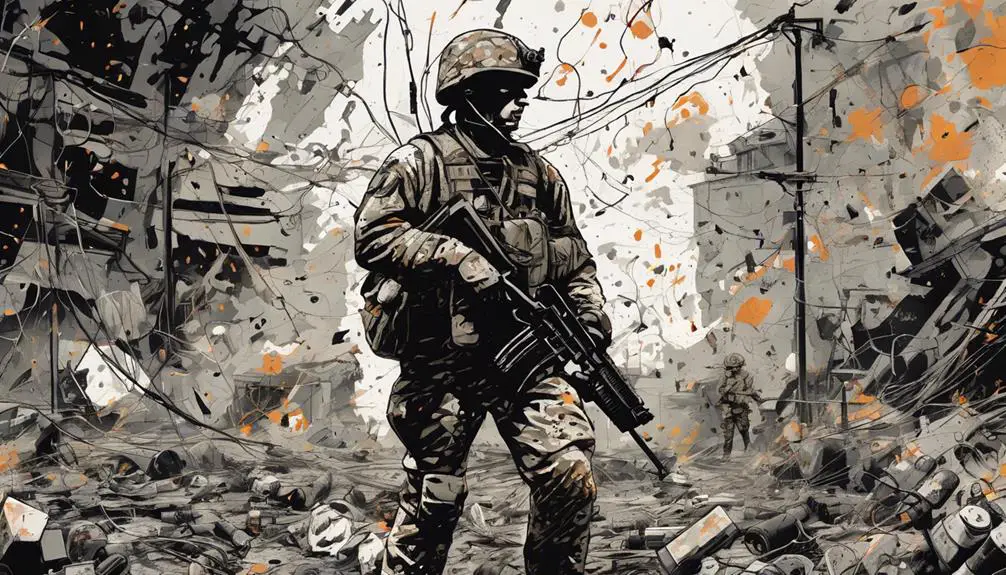As you explore military slang for explosives, you'll uncover terms born from combat's urgency, where brevity and clarity are essential. Terms like 'blaster' and 'boomstick' emerged in the early 20th century, driven by the need for concise communication in high-stress situations. You'll discover that understanding explosive materials, detonation principles, and artillery terms is necessary for mission success. Familiarizing yourself with specialized terms like 'fire mission' and 'gun bunnies' is important for effective communication and situational awareness. As you dig deeper, you'll uncover a rich lexicon shaped by the realities of modern warfare, where mastery of explosive slang can be a matter of life and death.
Origins of Explosive Slang
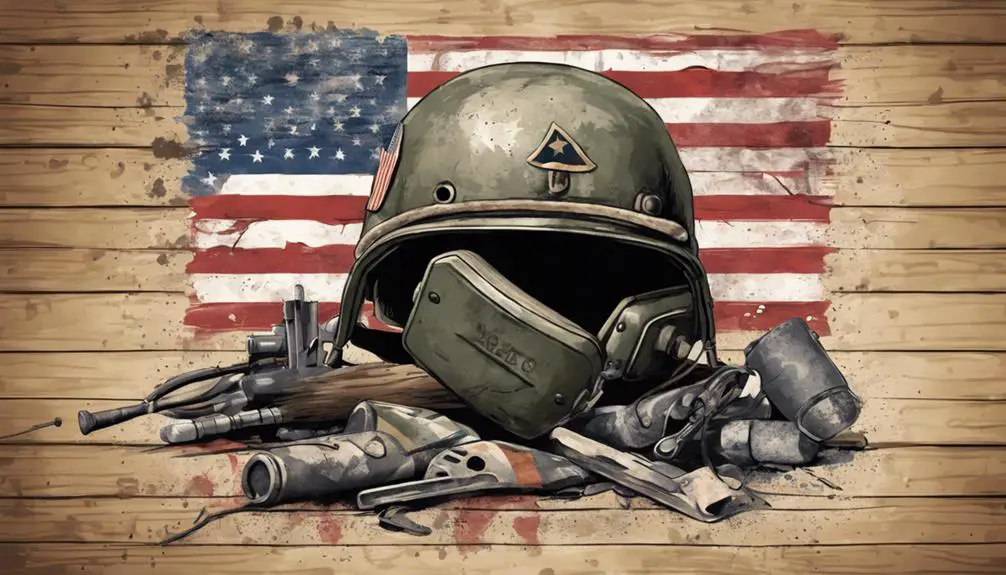
How did military personnel come to adopt a unique lexicon for explosives, and what historical events or cultural influences contributed to its development? You're likely familiar with terms like "blaster" or "boomstick," but have you ever wondered where they originated? The etymology of blasters, for instance, dates back to the early 20th century, when soldiers began using the term to describe handheld explosive devices. This colloquialism likely emerged from the need for brevity and clarity in high-stress combat situations.
The evolution of explosive lingo can be attributed to a combination of cultural and historical factors. During World War I, soldiers from different regions and linguistic backgrounds converged, leading to the development of a shared, utilitarian vocabulary. The rise of explosives in modern warfare further accelerated this process, as troops adapted existing terminology to describe new technologies and techniques. As you explore the world of military slang for explosives, it's essential to understand the historical context that shaped this unique lexicon.
Boom: The Basics of Explosives
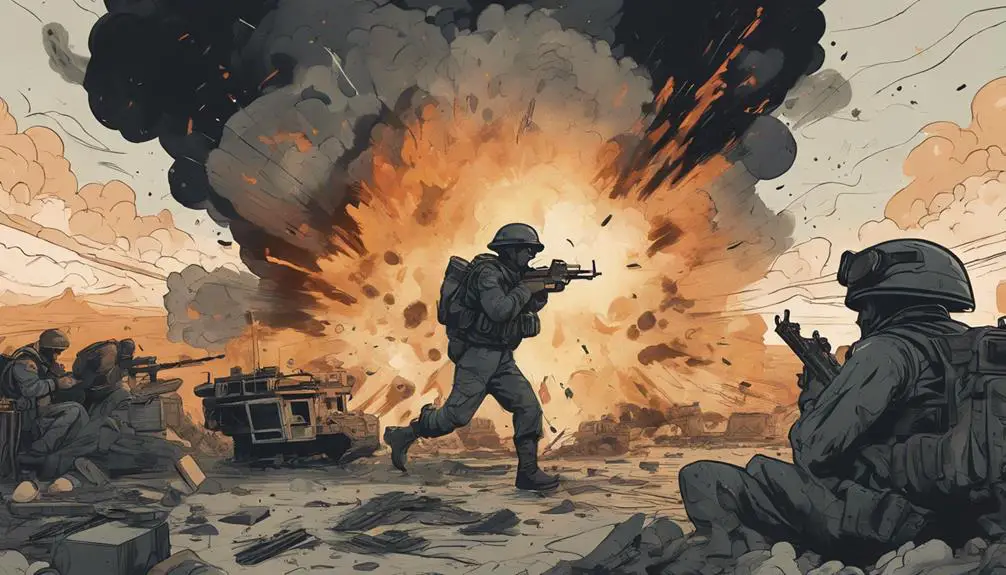
When you're dealing with explosives, understanding the fundamental principles of detonation is vital, as it can mean the difference between a successful mission and a catastrophic failure. Explosive chemistry is a critical aspect of this understanding, as it involves the rapid release of energy through chemical reactions. This energy release generates a shockwave that can cause damage to structures and harm individuals. To mitigate these effects, blast protection measures are important. This includes the use of protective gear, such as helmets and body armor, as well as the design of structures to withstand blast forces.
As you work with explosives, it's necessary to comprehend the characteristics of different explosive materials, including their sensitivity, stability, and power. This knowledge will help you handle and deploy explosives safely and effectively. Furthermore, understanding the principles of detonation will enable you to assess the risks and consequences of explosive events, making you a more effective and informed operator in the field.
Artillery and Ordnance Terms
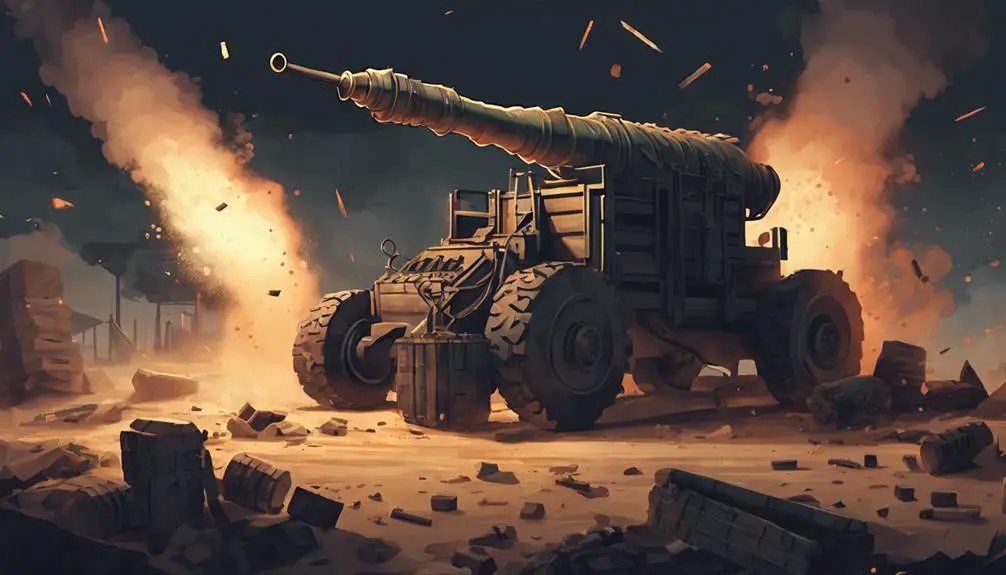
In the field of artillery and ordnance, you'll frequently encounter specialized terminology that's essential to understanding the capabilities and limitations of various explosive systems. Familiarizing yourself with these terms is important for effective communication and situational awareness.
When it comes to artillery, you'll hear terms like 'Fire Mission,' which refers to a specific task assigned to a fire support unit. This can involve delivering high-explosive rounds onto a target, providing suppressive fire, or conducting a reconnaissance-by-fire mission.
In artillery units, you'll often find 'Gun Bunnies' – the colloquial term for artillerymen responsible for loading, aiming, and firing the guns. These personnel must be well-versed in the technical aspects of their weapon systems, including firing tables, trajectory calculations, and ammunition types.
Understanding artillery and ordnance terms is essential for coordinating fire support, executing missions, and ensuring the safety of friendly forces. By grasping these specialized terms, you'll be better equipped to operate effectively in a fast-paced, dynamic environment.
Demolitions and Breaching
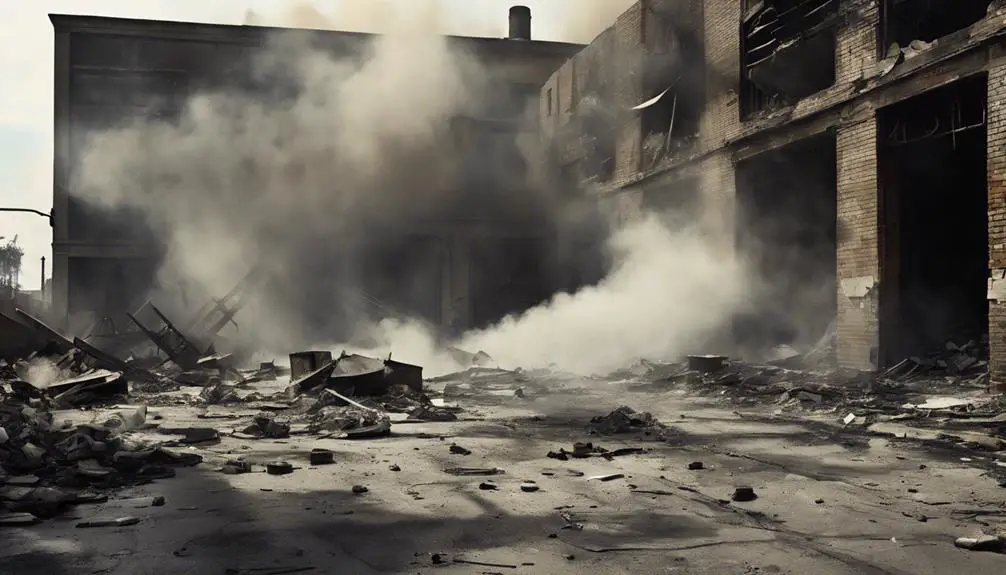
You're likely familiar with the phrase 'breach and clear,' which refers to the process of gaining unauthorized access to a room or building, often using explosive breaching techniques. In a military context, breaching involves using explosives to gain entry into a secured area, and it's a critical skill for special operations forces. When it comes to explosive entry, the blast seat is a vital component. It's the area where the explosive charge is placed, and its positioning is essential for a successful breach. The goal is to create a controlled blast that allows for safe and efficient entry. In explosive breaching, the type of explosive and its placement are pivotal factors. The blast seat must be carefully selected to ensure the explosive force is directed inward, minimizing collateral damage and maximizing the effectiveness of the breach. Effective breaching techniques require extensive training and practice to master, but they're essential for military operations that require rapid and secure entry into hostile environments.
Improvised Explosive Devices

Deployed in asymmetric warfare, improvised explosive devices (IEDs) have become a hallmark of modern insurgent tactics, posing a significant threat to military personnel and civilians alike. As you operate in hostile environments, you'll encounter IEDs in various forms, from crude homemade bombs to sophisticated devices triggered by IED detonators. These explosives can be concealed in everything from abandoned vehicles to roadside debris, making it important to remain vigilant and aware of your surroundings.
You'll need to recognize the signs of potential IEDs, such as unusual wiring, batteries, or other components that seem out of place. Keep in mind that IEDs can be triggered by a variety of means, including pressure plates, remote detonation, or tripwires. Homemade bombs, in particular, can be highly unpredictable and prone to accidental detonation, making them especially dangerous. As you navigate these high-risk environments, it's crucial to stay alert and report any suspicious activity to your unit's Explosive Ordnance Disposal (EOD) team.
EOD: Explosive Ordnance Disposal
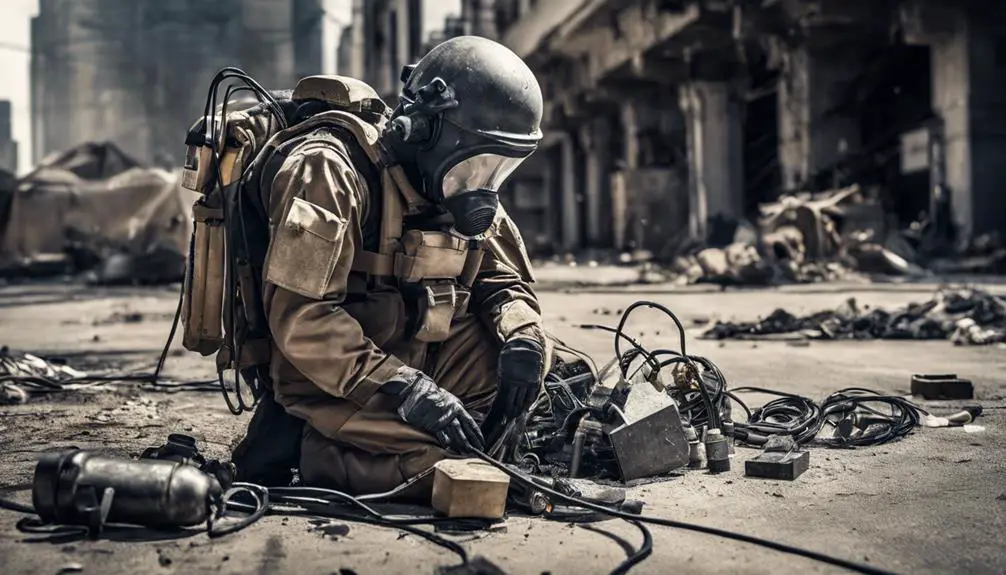
What role do you play in supporting EOD operations, and how can your unit's Explosive Ordnance Disposal team mitigate the threat of IEDs? As a member of a military unit, your role is critical in providing support to EOD teams, enabling them to respond quickly and effectively to explosive threats. Your unit's EOD team faces numerous challenges, including the need to stay up-to-date with evolving EOD protocols and adapting to new threats.
EOD challenges are multifaceted, ranging from detecting and neutralizing IEDs to disposing of explosive remnants of war. Effective EOD protocols require a deep understanding of explosive materials, detonation techniques, and safety procedures. Your unit's EOD team must be well-versed in these protocols to ensure successful operations. By providing logistical and tactical support, you play an essential role in enabling your EOD team to overcome these challenges and mitigate the threat of IEDs. By working together, you can help secure the safety of personnel and the success of missions.
Munitions and Warheads
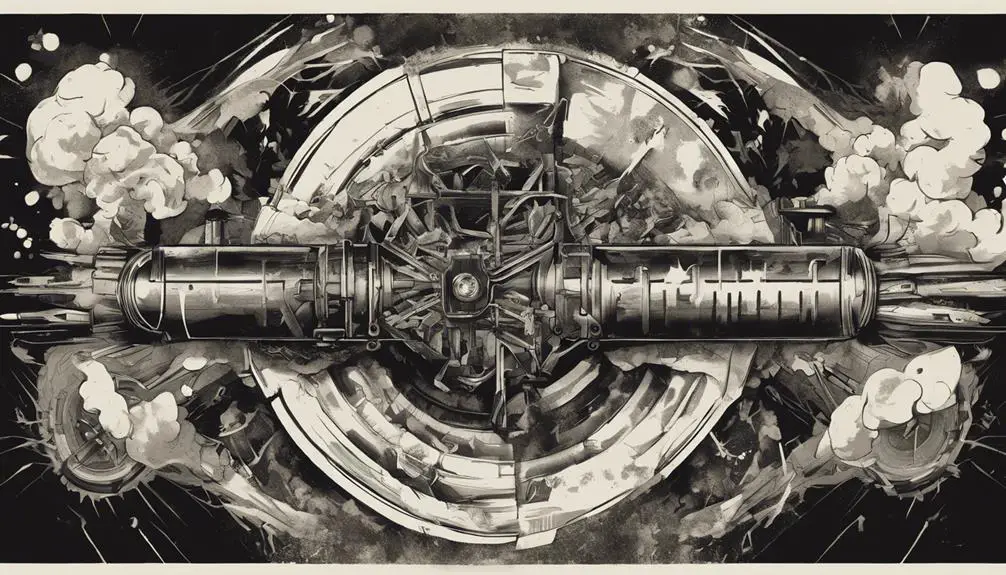
As you support EOD operations, it's important to understand the munitions and warheads that can be used in IEDs, which often feature complex configurations and varying levels of sophistication. You need to recognize the types of munitions that can be used, including high-explosive fragmentation warheads, which can produce a large blast radius and cause significant damage. When dealing with these devices, it's vital to remember the phrase 'frag out' – a warning to evacuate the area immediately due to the imminent detonation of a fragmentation warhead.
When evaluating IEDs, you should be mindful of the different types of warheads, including shaped charges, fragmentation warheads, and thermobaric warheads. Each type has its unique characteristics, and understanding these differences is crucial to effectively neutralizing the threat. For instance, shaped charges are designed to penetrate armor, while fragmentation warheads are intended to cause widespread damage. By recognizing the types of munitions and warheads used in IEDs, you can develop effective strategies for mitigation and neutralization, ultimately reducing the risk of casualties and damage.
Slang in Modern Warfare
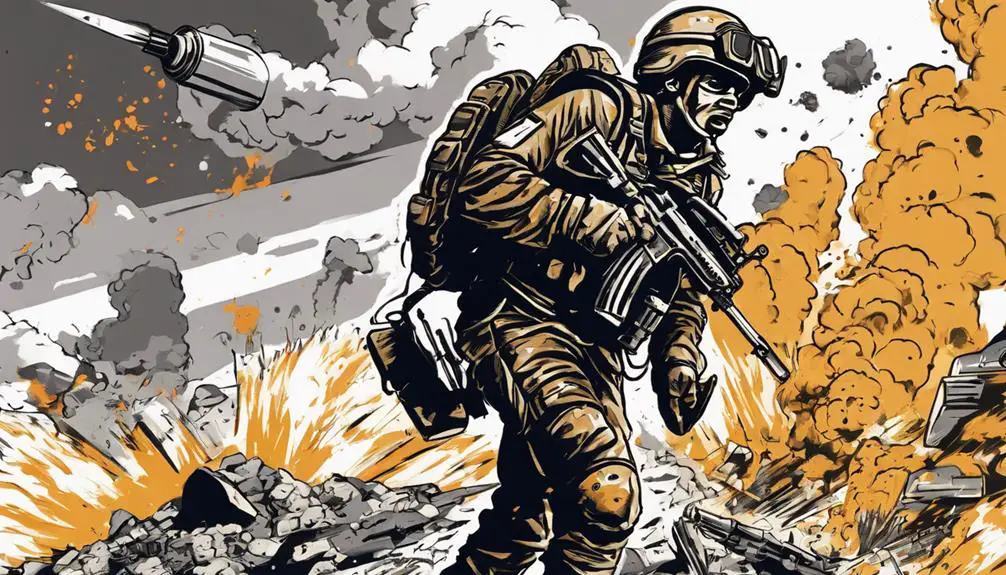
How do you stay ahead of the enemy's tactics when they're using coded language to coordinate their efforts? In modern warfare, understanding warrior lingo is essential to gaining a strategic advantage. You must be able to decipher the enemy's communication to anticipate their next move. Digital battlefield communication has become a key aspect of modern warfare, and being able to intercept and decode enemy transmissions is important to staying one step ahead.
Warrior lingo is not just limited to verbal communication; it also includes visual and digital signals. You need to be familiar with the various forms of coded language used by the enemy to coordinate their efforts. This includes understanding abbreviations, acronyms, and codewords used in digital communication. Staying ahead of the enemy's tactics requires a deep understanding of their language and communication methods.
In the digital battlefield, speed and accuracy are critical. You must be able to quickly analyze and respond to enemy communication to gain a strategic advantage. By understanding warrior lingo, you'll be better equipped to anticipate and counter the enemy's tactics, giving you a decisive edge in modern warfare.
Frequently Asked Questions
Can Civilians Use Military-Grade Explosives for Personal Use?
You're wondering if you can use military-grade explosives for personal projects. The answer is a resounding no. As an explosive hobbyist, you might be tempted to try DIY demolition, but military-grade explosives are heavily regulated and restricted to authorized personnel. These materials are extremely dangerous and can cause catastrophic harm if mishandled. Leave the explosives to the professionals and focus on safer, legal alternatives for your projects.
Are All Explosive Devices Inherently Dangerous to Handle?
When handling explosive devices, you're exposed to inherent risks. Improper handling can lead to devastating consequences. That's why adherence to strict handling protocols is vital. You must exercise extreme caution, following established procedures for safe storage, transportation, and deployment. Failure to do so can result in catastrophic accidents, putting lives at risk. Understanding explosive risks and adhering to handling protocols is paramount to minimize the danger.
Is Military Slang for Explosives Only Used by the Military?
Imagine being a cryptic messenger, deciphering codes in the shadows. You might assume military slang for explosives is exclusive to the military, but that's not entirely true. Military lingo evolution is a dynamic process, with slang origins often rooted in civilian culture. Terms like 'boomstick' and 'pineapple' originated outside the military, only to be adopted and explored by soldiers. As you investigate further, you'll find that military slang for explosives is used by various groups, including law enforcement and bomb disposal units, making it a more widespread phenomenon than you thought.
Can Explosives Be Safely Detonated in Residential Areas?
When considering detonating explosives in residential areas, you'll need to prioritize safety above all. First, guarantee blast zone clearance by evacuating people and securing a perimeter. Then, follow urban demolition protocols to minimize collateral damage. These protocols dictate specific procedures for explosive handling, placement, and detonation. By adhering to these guidelines, you can mitigate risks and safely detonate explosives in residential areas, protecting both people and property.
Are Improvised Explosive Devices Only Used by Terrorists?
Understanding the various motivations behind IED use is crucial. Bomb-making tactics are frequently improvised, hence the name, and can be utilized by different groups or individuals. It's important to recognize that IEDs can serve a range of purposes, including disrupting economic activities or intimidating populations, beyond just terrorist activities.

